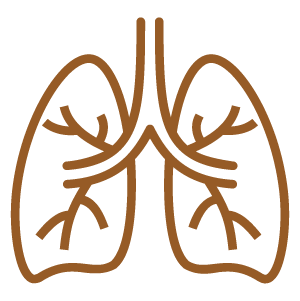American Botanical Council. (2004). The ABC clinical guide to elderberry. http://abc.herbalgram.org/site/DocServer/Elderberry-scr.pdf
Barak, V., Halperin, T., & Kalickman, I. (2001). The effect of Sambucol, a black elderberry-based, natural product, on the production of human cytokines: I. Inflammatory cytokines. European Cytokine Network, 12(2), 290-296. https://pubmed.ncbi.nlm.nih.gov/11399518/
Buhner, S. H. (2013). Herbal antivirals: Natural remedies for emerging & resistant viral infections. Storey Publishing.
Dévora Gutiérrez, S., Hernández-Luis, F., Martín-Herrera, D., Morales Marrero, C. C., & Abdala, S. (2023). Diuretic activity of Sambucus nigra L. ssp. palmensis (Link) R. Bolli, an endemic Canary Islands species. Boletín Latinoamericano y del Caribe de Plantas Medicinales y Aromáticas, 22(4), 500. https://doi.org/10.37360/blacpma.23.22.4.37
Easley, T., & Horne, S. (2016). The modern herbal dispensary: A medicine-making guide. North Atlantic Books.
Gardner, Z., & McGuffin, M. (2013). American Herbal Products Association’s Botanical Safety Handbook (2nd ed.). CRC Press.
Lin, P., Hwang, E., Ngo, H. T. T., Seo, S. A., & Yi, T. H. (2019). Sambucus nigra L. ameliorates UVB-induced photoaging and inflammatory response in human skin keratinocytes. Cytotechnology, 71(5), 1003–1017. https://doi.org/10.1007/s10616-019-00342-1
McIntyre, A. (2019). The complete herbal tutor. Aeon.
Picon, P. D., Picon, R. V., Costa, A. F., Sander, G. B., Amaral, K. M., Aboy, A. L., & Henriques, A. T. (2010). Randomized clinical trial of a phytotherapic compound containing Pimpinella anisum, Foeniculum vulgare, Sambucus nigra, and Cassia augustifolia for chronic constipation. BMC Complementary and Alternative Medicine, 10(17). https://doi.org/10.1186/1472-6882-10-17
Roschek, B. Jr, Fink, R.C., McMichael, M.D., Li, D., & Alberte, R.S. (2009). Elderberry flavonoids bind to and prevent H1N1 infection in vitro. Phytochemistry, 70(10), 1255-61. https://doi.org/10.1016/j.phytochem.2009.06.003
Stanković, M., Živković, J., Tadić, V., & Arsić, I. (2017). Skin protection against solar UV radiation by natural plant products: Extracts from elder fruit (Sambucus nigra L.). RAD Conference Proceedings, 2, 231–236. http://www.rad-proceedings.org
Tiralongo, E., Wee, S. S., & Lea, R. A. (2016). Elderberry supplementation reduces cold duration and symptoms in air-travelers: A randomized, double-blind placebo-controlled clinical trial. Nutrients, 8(4), 182. https://doi.org/10.3390/nu8040182
Ulbricht, C., Basch, E., Cheung, L., Goldberg, H., Hammerness, P., Isaac, R., & Wortley, J. (2014). An evidence-based systematic review of elderberry and elderflower (Sambucus nigra) by the natural standard research collaboration. Journal of Dietary Supplements, 11(1), 80-120. https://doi.org/10.3109/19390211.2013.859852
Zakay-Rones, Z., Varsano, N., Zlotnik, M., Manor, O., Regev, L., Schlesinger, M., & Mumcuoglu, M. (1995). Inhibition of several strains of influenza virus in vitro and reduction of symptoms by an elderberry extract (Sambucus nigra L.) during an outbreak of influenza B Panama. Alternative & Complementary Medicine, 1(4), 361-369. https://doi.org/10.1089/acm.1995.1.361













